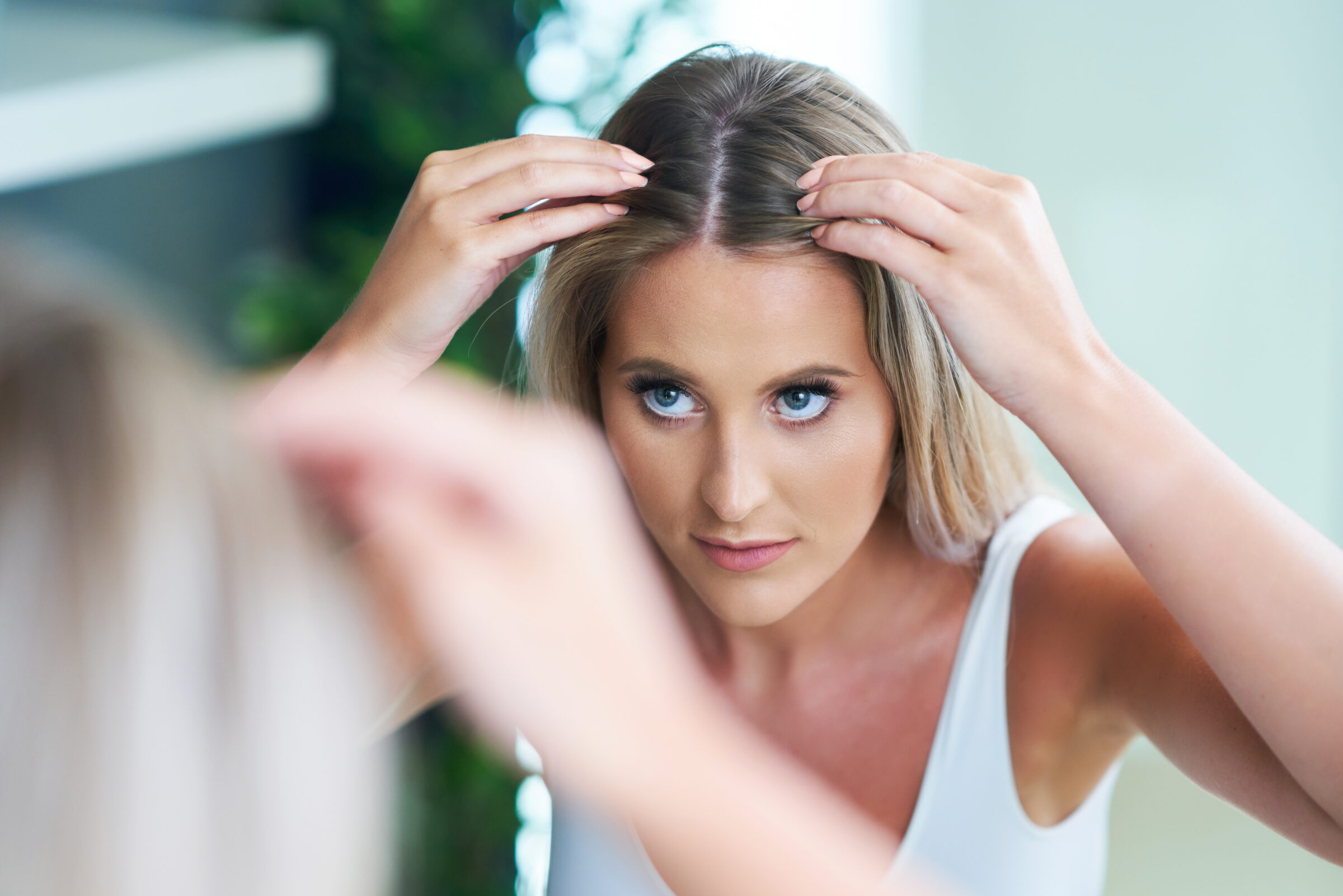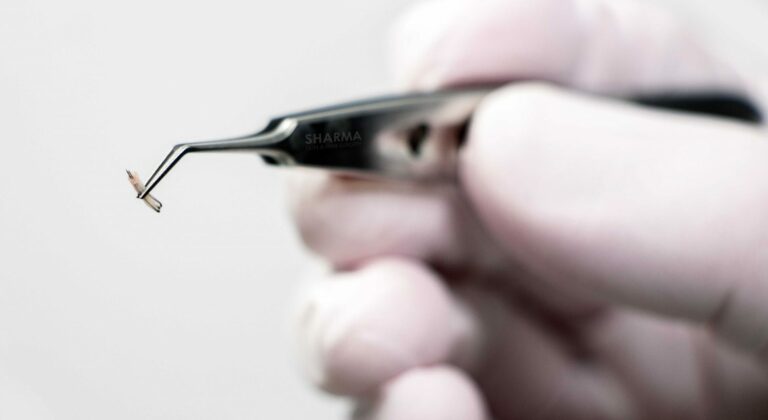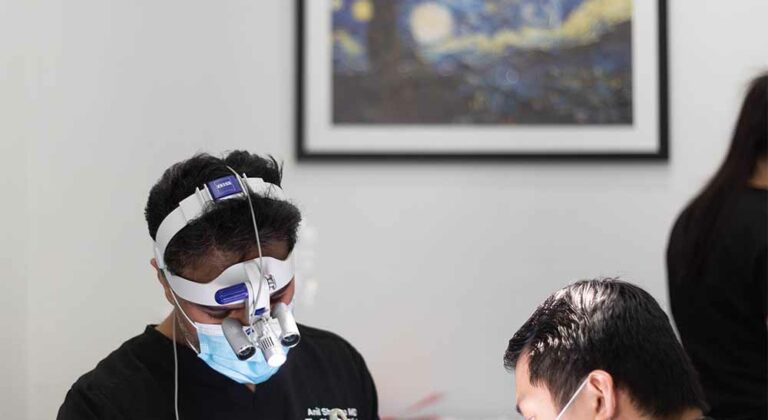While it isn’t likely that women will go completely bald, hair loss can be significant to the point that it affects overall appearance. Keep in mind that female hair loss is different than male baldness due to the pattern in which the hair is lost. Men tend to experience hair loss starting in the front of the head, receding back with time. Women, on the other hand, experience thinning in other ways.
Female pattern hair loss is a progressive condition and can start with a bit of thinning around the part in your hair. This thinning causes the part to widen. Some women have widespread thinning that affects the entire top of the scalp. It is also possible for thinning to affect the front hairline.
Another sign of female pattern hair loss is that the thickness of your hair is shrinking. For example, you might notice that your ponytail is thinner and smaller compared to the hair thickness you’ve had in the past.
It is normal to shed between 50 – 100 hairs per day, which is why you see hair collecting in your brush over time. But if you notice the development of thinning or balding patches, it may be time to talk to Dr. Sharma about your treatment options.
When something disrupts the regular chemical balance in your body, it can lead to changes in the hair. Some common external causes that may disrupt a woman’s hormonal balance include, pregnancy, childbirth, high levels of stress, hormonal birth control, illness, and female specific conditions such as PCOS. During the childbearing years, estrogen (primarily) and progesterone play an important role in every system in the body.
It is common for women to notice a decrease in hair density 5-7 years before and throughout menopause. Because these years cause rapid changes to hormone regulation, hair loss may occur as a result. Post-menopause Estrogen production fall to their lowest throughout a females lifetime which can often be a contributing factor to thinning and recession, primarily at the crown.
Causes of Female Pattern Hair Loss
It is estimated that as many as two-thirds of women have hair loss that occurs after menopause, although some women experience it much earlier in life. Due to the timing of the hair loss, many researchers believe that female pattern hair loss is related to hormonal changes in the body. This hereditary condition causes the hair growing phase to slow down. As the hair follicles are affected by hormones, these follicles begin to shrink. Women often find that the hair is finer and thinner, making it highly susceptible to breakage. Eventually, new hair stops growing in certain areas of the scalp. Hair loss is passed through generations. Therefore, if you have parents or close relatives with female pattern hair loss, it is likely that you may develop this condition.
Medically reviewed by
Updated on
Have a question?
Find out how we can help you look feel your absolute best
Contact us 780-476-7970


